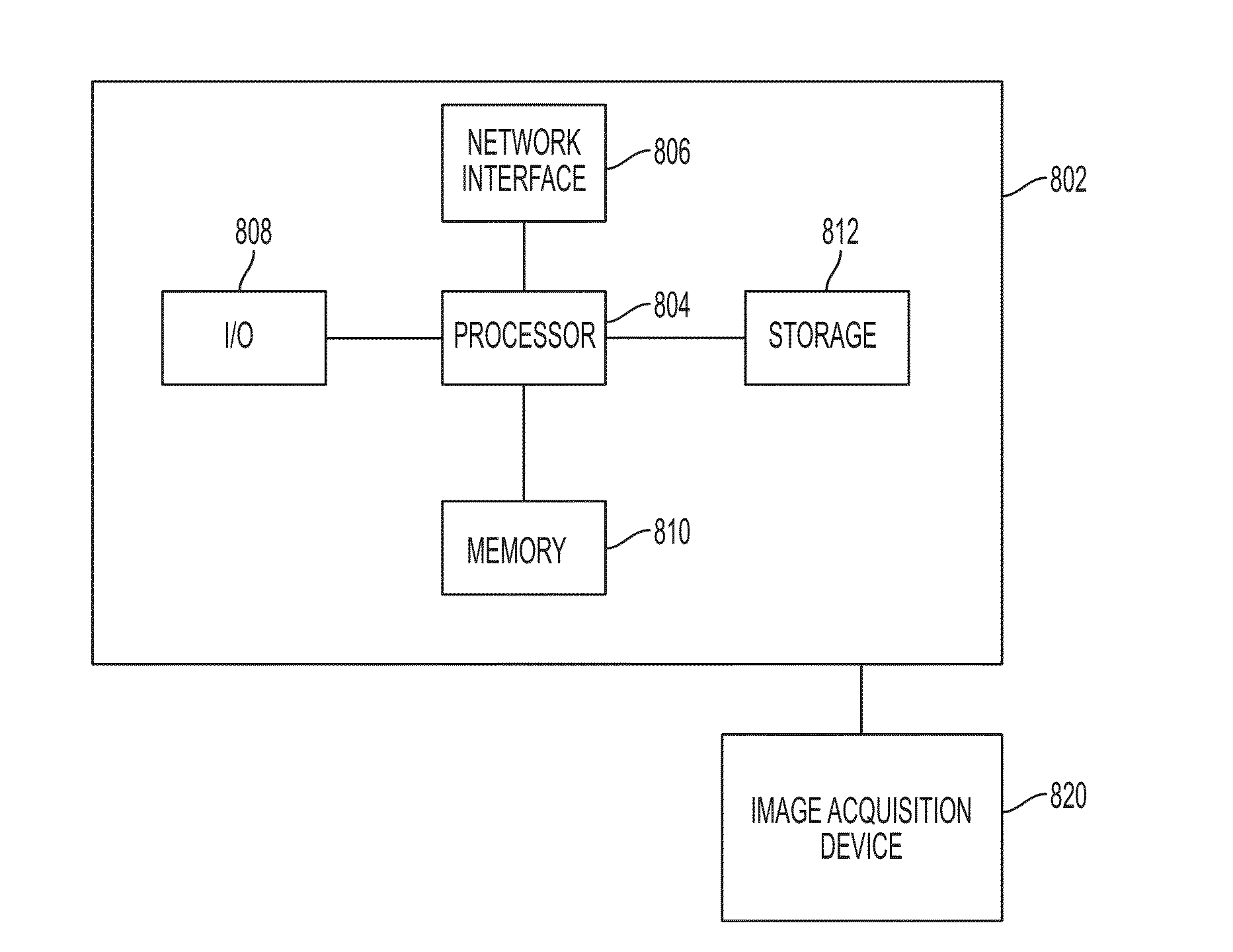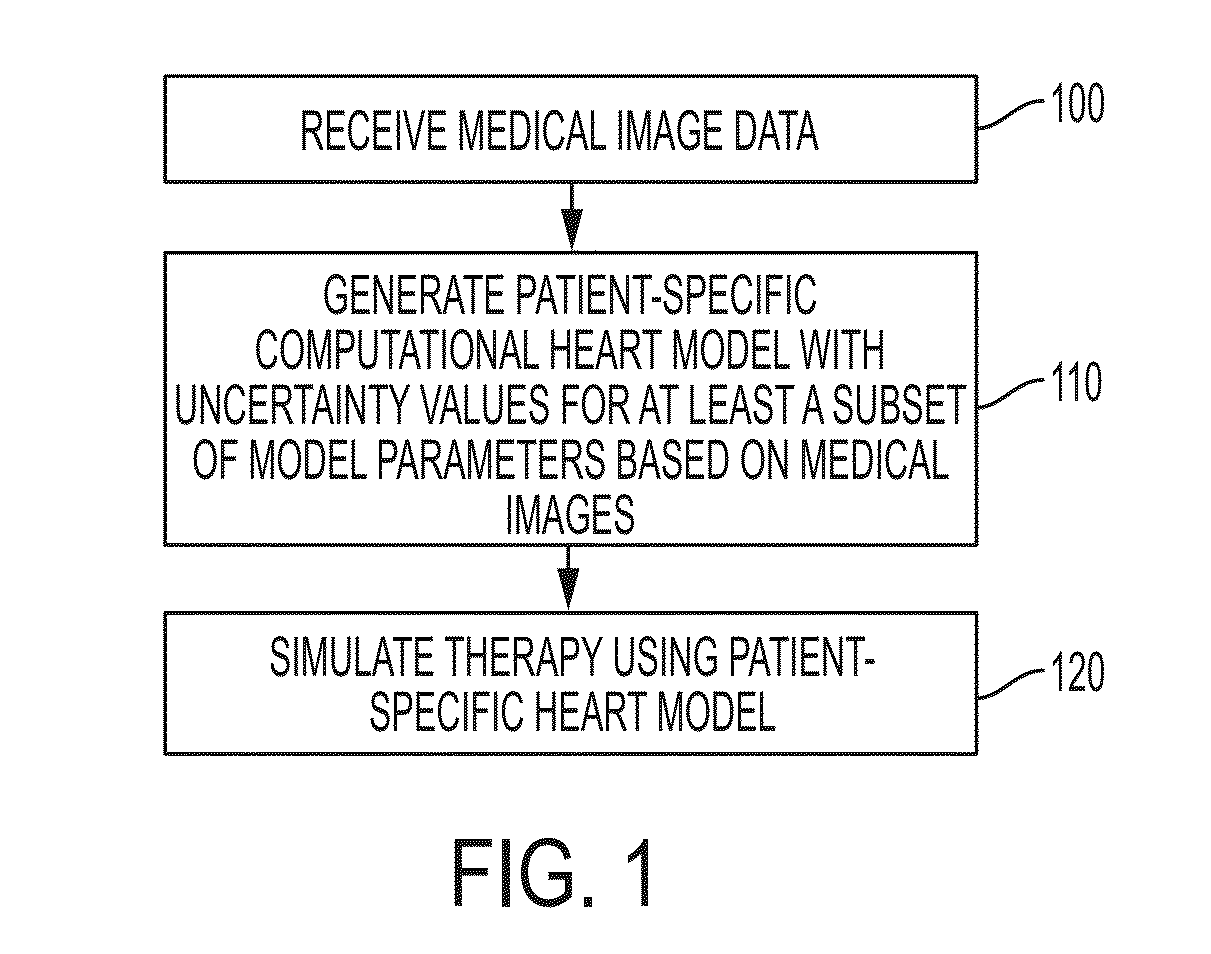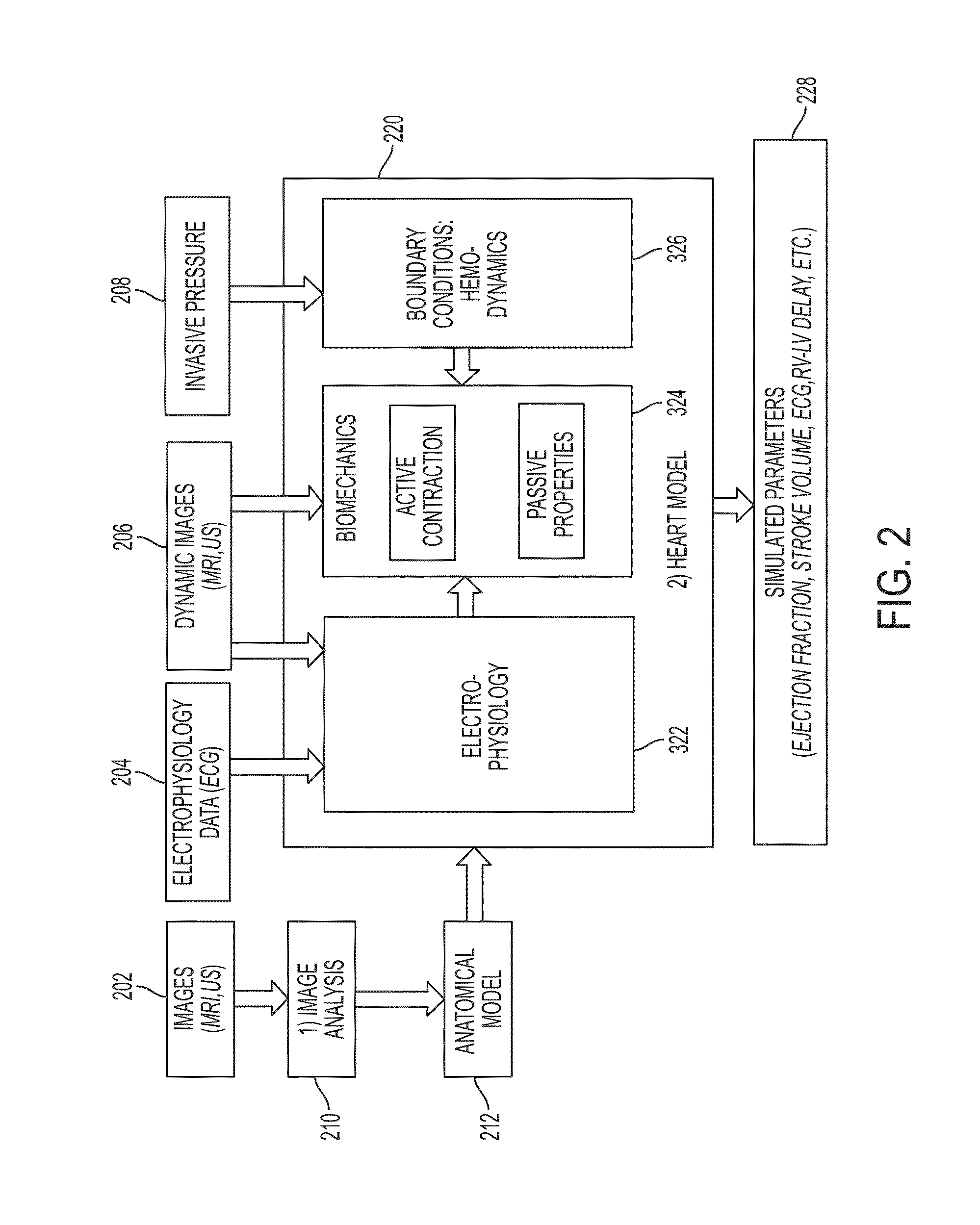Method and System for Image-Based Estimation of Multi-Physics Parameters and Their Uncertainty for Patient-Specific Simulation of Organ Function
a multi-physics parameter and uncertainty technology, applied in computing models, probabilistic networks, instruments, etc., can solve problems such as affecting the personalization of these models and the challenge of clinical management of cardiomyopathy patients
- Summary
- Abstract
- Description
- Claims
- Application Information
AI Technical Summary
Benefits of technology
Problems solved by technology
Method used
Image
Examples
Embodiment Construction
[0016]The present invention relates to the estimation of patient-specific parameters of computational models of organ function from medical images and clinical data, along with their uncertainty due to model assumptions, data noise and inverse problem algorithm limitations. The invention is illustrated on the specific use-case of the estimation of cardiac tissue biomechanical properties from medical images and clinical data, although it could be applied to other physics (e.g. electrophysiology, cardiac hemodynamics) and other organs (e.g. lung motion, liver heat capacity). A digital image is often composed of digital representations of one or more objects (or shapes). The digital representation of an object is often described herein in terms of identifying and manipulating the objects. Such manipulations are virtual manipulations accomplished in the memory or other circuitry / hardware of a computer system. Accordingly, is to be understood that embodiments of the present invention may...
PUM
 Login to View More
Login to View More Abstract
Description
Claims
Application Information
 Login to View More
Login to View More - R&D
- Intellectual Property
- Life Sciences
- Materials
- Tech Scout
- Unparalleled Data Quality
- Higher Quality Content
- 60% Fewer Hallucinations
Browse by: Latest US Patents, China's latest patents, Technical Efficacy Thesaurus, Application Domain, Technology Topic, Popular Technical Reports.
© 2025 PatSnap. All rights reserved.Legal|Privacy policy|Modern Slavery Act Transparency Statement|Sitemap|About US| Contact US: help@patsnap.com



